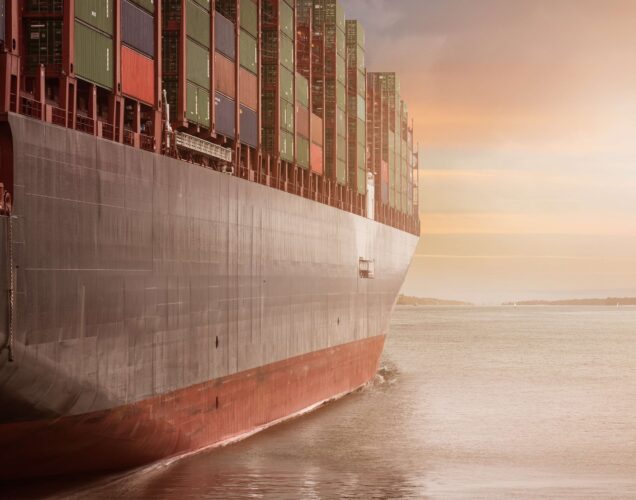Shipping small consignments of goods on an ad-hoc basis can become quite expensive, especially if you find yourself hiring a whole container but not using all the space. With prices for containers being 5-6 times more than they were in 2020, you’ll probably want to find a way to ship your goods in the most cost-effective way possible.
LCL (less-than-container load) shipping can be a good way to optimise your costs. But exactly what is LCL shipping and how does it work?
What is LCL shipping?
LCL shipping is a method of shipment where your cargo doesn’t fill a full container – in other words, it takes up ‘less than a container load’. LCL shipping allows your goods to share container space with other small shipments to make up a full container between them. This way, you only pay for the space you use.
When is LCL shipping right for your business?
In a nutshell, LCL shipping will make most sense for your business when you need to transport smaller consignments sooner, rather than waiting for the moment when you’ll be able to fill a whole container. The main benefits of LCL shipping are:
- Move smaller shipments with lower costs
- Avoid high air freight cost per kg
- Reduce your inventory costs
- Find space during peak season
The main difference between LCL and FCL (full container load) shipping is how the container space is used. With LCL shipping, multiple smaller shipments are consolidated in one container, whereas FCL shipments will take up the whole of the container on their own, regardless of when they fill it.
However, there are other differences between LCL and FCL shipping that are worth considering when it comes to deciding which method is the best option for you.
Cost of LCL shipping
LCL is typically a more cost-effective way of shipping small volumes of goods. This makes it ideal for small businesses that aren’t yet ready to import full container loads.
With LCL shipments, the shipping cost is based on the volume of space your goods occupy within the container, or sometimes the weight, depending on which works out greater. This tends to be calculated in cubic metres (CBM) or KGs for weight, with a 1CBM to 1,000KGs ratio. With an FCL shipment, you will pay a flat fee for the full container space.
While the cost per cubic metre is more expensive for LCL shipping, it will still work out cheaper than FCL if you’re using a small amount of container space. However, if you start to ship more regularly or need a higher volume of container space, it may be worth doing some calculations to work out which is cheaper out of LCL and FCL. Hemisphere will be able to help with this and obtain the best possible deal for your shipments.
Delivery of goods
Another difference between LCL and FCL shipping is the way your goods are delivered to you.
With FCL shipments, goods are delivered in the shipping container, which will be fixed to the back of a large truck. Unless you have paid more for a Hiab or side-loading truck (a truck which can lift the container to the floor and back onto the truck), the container can’t be lowered onto the ground for unloading.
You’ll usually have three hours to unload your goods from the container – six feet above the ground – before the truck drives away, meaning you’ll need a forklift (or extra personnel) for assistance. Alternatively you could source a warehouse to unload the container and transport the goods to you on pallets in a standard curtain-sided trailer or similar vehicle to suit your requirements.
On the other hand, LCL shipments are usually delivered using a standard curtain-sided trailer and will usually be palletised, which makes them easier to unload. You’ll also have the flexibility of requesting a smaller truck for delivery if your premises has restricted access, or a tail-lift delivery for lowering goods to the floor, if you don’t want to unload by hand or don’t have access to a forklift.
Loading
FCL shipments are only handled by yourself and the supplier (if you’re importing) or customer (if exporting). The goods will be loaded into the container, which is then sealed. The container is then delivered, still sealed. This minimises the chances of goods being damaged in transit, so FCL may be your best option if you’re transporting fragile cargo.
LCL shipments are handled at various points through the shipping process. They are first loaded onto a truck at the point of collection, then unloaded into a warehouse at the port before being loaded into a shared container. When they arrive, this process happens in reverse.
How LCL shipping rates are calculated
LCL shipping rates are calculated by volume, i.e. the amount of space in cubic metres (CBM) your goods take up. These rates will vary according to demand for container space and the times of year. The more container volume you need for your shipment, the more you will pay.
LCL shipping rates do also take weight into account. However, this typically has far less bearing on the overall cost than volume, simply because container ships can handle huge amounts of weight.
A quote for LCL shipping will generally include the following:
- Pickup: the cost of collecting your shipment from the pickup point, which may be a warehouse, factory or other premises.
- Loading: this may also be labelled as ‘origin’. It covers the loading (or ‘stuffing’) of containers with your and other shipments at a Container Freight Station (CFS). So you then have a consolidated load.
- Shipping: the cost of the sea journey itself, from port of origin to port of destination. This will vary depending on the shipping line used and a number of other factors.
- Deconsolidation: when arriving at the destination country, LCL shipments will stop at another CFS, so the containers can be ‘unstuffed’ or deconsolidated.
- Delivery: the cost of transporting your goods to their final destination, as well as unloading if you will not be doing this yourself.
- Documentation and Customs Clearance: there will also be administration costs associated with the documents and processes for getting your goods through customs.
LCL sea freight containers
The containers used for LCL are exactly the same as for FCL. The standard dimensions are 8ft (2.44m) wide by 8.5ft (2.59m) high, with two options for length: 20ft (6.1m) and 40ft (12.2m). As you can imagine, this is so they can all be stacked efficiently and safely in high volume in ports, warehouses and of course on container vessels.
You may not have a choice in the length of container your goods travel in. But if your consignment takes up more space than a 20ft container, then you will obviously share a 40ft container with other shipments.
LCL cargo services
LCL shipping means you share the cost of a container with other importers when bringing goods into the UK from anywhere around the world, so you only pay for the space you actually use. The key point with LCL is having access to containers with space still available.
Fortunately, our connections throughout the industry and the scale of traffic within our own clients means we are usually in a position to take advantage of excess volume on a regular basis.
When should you ship LCL?
This ultimately comes down to the volume of goods you are shipping and how soon you need them delivered. There are also other factors to consider, including the fragility of the cargo and whether you have enough space in your warehouse to accommodate a full container load.
Ultimately though, LCL is a good bet for smaller consignments of low-value goods, or companies that are starting to test the water with importing or exporting. Not only does it tend to work out cheaper than FCL, but it also gives you the flexibility to top up your stock as and when you need it, although you need to take into account the lead times of shipping.
Use LCL services to ship globally
LCL shipping can be used to cost-effectively ship goods by sea all over the globe, from Europe to USA, South America, China, Indonesia, South Africa, New Zealand and more.
Special LCL Shipping to Australia
However, due to demand, we also offer a dedicated LCL groupage service from Felixstowe to Sydney, Australia. This has allowed us to guarantee space on this popular shipping route at a predictable cost without the hassle of having to check around for space in other containers. The container is loaded at our own premises and shipped no matter how full it is, minimising delays.
Use a specialist LCL shipping company for better freight rates
At Hemisphere Freight Services, our team can organise an LCL shipment on your behalf, while offering further advice on the options available to you. Drawing on our global partner network, we’ll book container space according to your needs and can even organise onward transport from the port, providing a full door-to-door service. Please get in touch to discuss your requirements further.
For more information about this service, please email oceansales@hemisphere-freight.com.






